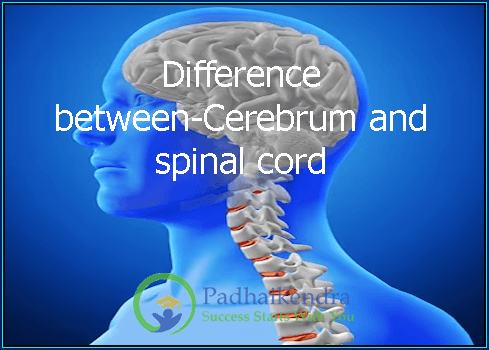The cerebrum and the spinal cord are two different structures of the central nervous system with different functions and locations in the body.
The cerebrum is the largest part of the brain, located in the upper part of the skull. It is divided into two hemispheres and is responsible for higher brain functions, including conscious thought, perception, emotion, memory, and voluntary movement. It is also involved in language, decision-making, problem-solving, and creativity. The cerebrum has a convoluted surface with folds and grooves called sulci and gyri, which increase its surface area and allow for more complex functions.
The spinal cord, on the other hand, is a long, thin, cylindrical bundle of nerve fibers that extends from the brainstem down through the center of the vertebral column. It is responsible for transmitting signals between the brain and the rest of the body, and for carrying out basic reflexes. The spinal cord is protected by the bony structures of the vertebral column, and is surrounded by three layers of protective membranes called the meninges.
In summary, the cerebrum is the largest part of the brain, located in the upper part of the skull, and responsible for higher brain functions, while the spinal cord is a long, thin, cylindrical bundle of nerve fibers that extends down through the center of the vertebral column, responsible for transmitting signals between the brain and the rest of the body, and for carrying out basic reflexes.





